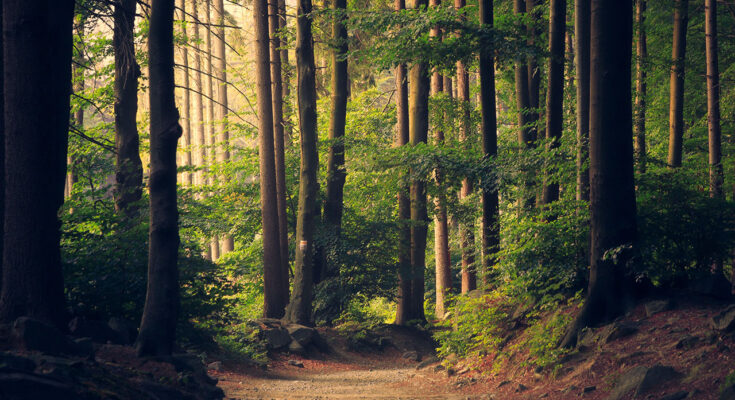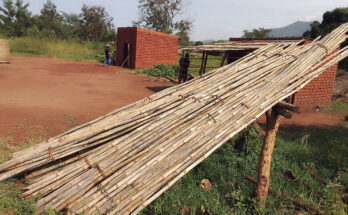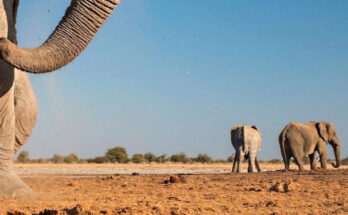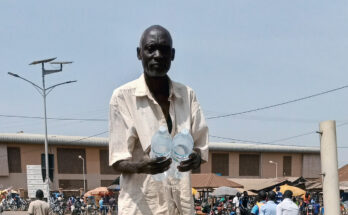Photo by Lukasz Szmigiel on Unsplash
An unpaved muddy road, full of potholes, leads from Adjumani town to Zoka Natural Forest located in Itirikwa Sub County. The road, which crosses the forest, also leads up to Apaa Land, a disputed area between Adjumani and Amuru District.
From this road, you can see the giant trees like the aeschynomene, titanophylla and combretum (bush willow) trees, and umbrella-shaped shrubs of Zoka Forest. In the forest, many people live off agricultural production, for example, maize, beans, cowpeas, simsim, groundnuts, millet, potatoes, cassava, and sunflowers. But farming and settlement in the forest are illegal according to the Uganda National Forest Authority.
As one keeps travelling deep inside Zoka Forest, on the road, traders or middlemen muscle it out on the muddy road, carrying charcoals, sugar cane and other grains to Adjumani Town and the wider region. Charcoal burning and encroachment for agriculture have destroyed 52% of the forest cover.

Zoka’s Biodiversity and its Conservation
Zoka rainforest covers more than 1,000 hectares. It borders the East Madi Wildlife reserves, an important elephant corridor established in 1950, in the North. The area is home to around 50 mammalian species, over 150 bird species and more than 300 plant varieties.
Among these plant species targeted by illegal loggers threatening its biodiversity are Afzelia Africana (African oak), which has been dangerously plundered. The shea nut is also under pressure from charcoal burners and farmers indiscriminately felling trees.
To Anyama Stephen, a resident of Zoka Central, continuous logging of the forest by non-community members has greatly affected the rainfall pattern of the area. He says for the wildlife spices to survive, the government should fence the forest. Stephen also said that the government should make it compulsory to grow fast maturing trees on at least one and half hectares of land, to be used as wood fuel.
“These trees we should not cut them unnecessarily, also the government should make planting of trees mandatory for citizen. This will minimize locals from encroaching into the forest and regain wildlife habitat and once these trees are planted government, through NFA, should regularly monitor the progress of the trees. This way, we can make this forest and animals rest at little bit”, said Stephen.
Zoka Forest is the northernmost tropical high forest in Uganda. While relatively small, it contains several primate species and an endemic flying squirrel only found in Zoka. It also contains several large mahogany trees and offers a cool breathing space from the heat of the rest of the East Madi Wildlife Reserve.
Northern Uganda is rich in bird- and wildlife, offering visitors an enticing alternative to the common safari circuits. The variety of bird species in Uganda is one of the greatest in the world and there is an impressive array of wildlife. The relative newness of the safari industry in the region means that visitors enjoy a more peaceful and personal experience with nature, according to a 2014 publication co-authored by Director of Wildlife Conservation Society (WCS) and Chairperson of the Uganda Tourism Association (UTA) Jan F Broekhuis. Tourism increases the importance of protecting this area.
The influx of refugees and demand for wood fuel
Adjumani District has an estimated forest cover of about 20,000-30,000 square kilometer but since the outbreak of the civil war in South Sudan, many people fled to Uganda and settled in Adjumani District, destroying over 27,000 square kilometer of forest land.
By January 2022, Adjumani District had a population of over 200,000 South Sudanese refugees, according to data from the Office of the Prime Minister. This influx led to the depletion of large swatches of forest cover because of high demand for wood fuel, shelter, and a sugar cane project in Amuru District as well have had a negative impact on biodiversity.
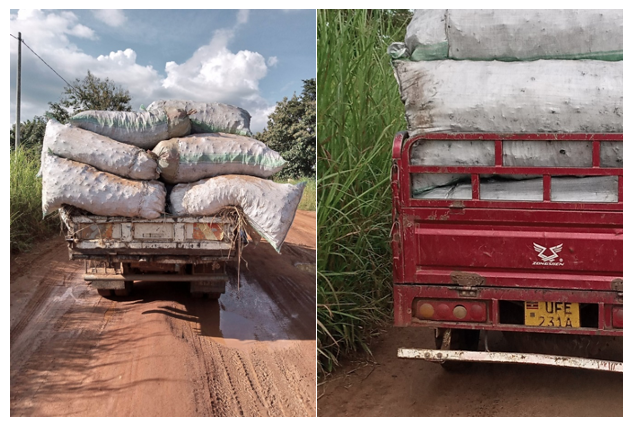
Nelly Grace, the Program Associate at UNFAO, attributed the high rate of deforestation to absence of alternative sources of fuel, the influx of refugees, increase in population and high demand from neighbouring countries. Out of every 10 households, at least 6 depend on woodland fuel, hence, threatening natural forests across the country. Miss Nelly says more than 500 hectares of forest land will be recovered through framer-led forest regeneration both on commercial and private land in a project they are currently implementing.
“Our situation in Uganda is very wasteful. For example, the ways and methods we used for harvesting charcoals are immensely damaging. It contributes to forest degradation and the ash particles also contribute to an increase in greenhouse gas emission. So, we hope to support the government as they transition to clean energy both in the long and short run”, says Grace.
Under the Forestry and Tree Planting Act-2003, National Forestry Authority is mandated to manage all central forestry reserves in the country and Juliet Mubi, Public Relations, and Spokesperson for NFA, says in 1990 Uganda had a total forest cover of about three million on private land, however, by 2019 it had reduced to 500, hectares and 2.5 million hectors had been lost in space of about 25-30 years.
NFA is currently implementing forest restoration programs like the community tree planting initiatives supported by the government of Uganda through giving free indigenous trees seedlings and the Re-forest Program. The program is implemented in partnership with UNHCR. It supports farmers and refugees to establishe woodlots and do reforestation on land that has been degraded.
“We have established nursery tree beds and seedlings across the country, and we have one in Adjumani, Moyo, however also we have new plans for supporting farmers under the Parish Development Module which we are still in discussion with government on how we can use the money to restore nature since the money is going directly to the beneficiaries at grassroots” stated Mubi.
Natural Forest is an asset and contributes about 8.7% to the national economy based on conservative estimates. Forests provide multiple benefits and if sustainably managed forests give environmental benefits, sustainable economic development and improve the quality of life of people across the country. Forests provide habitats for many native flora and fauna species, renewable products and energy and contribute to the development of a green economy. Forests also provide a wide range of wood and non-wood products, and clean water resources, and play a vital role in the mitigation of climate change.
Local solutions to reverse deforestation
To reverse this trend, Anyama Vini, a resident of Olwi village in Adjumani district, says the best way to conserve the forest is to use conscious farming methods like intercropping.
“While farming we shall plant trees alongside our crops, also we should replace the already cut down trees by planting new trees. Similarly, trees that are big, should only be pruned but not cut. Deep in the forest we should place beehives on them so that when the loggers come they will fear cutting down these trees when their see them having the beehives”, says Vini.
In Uganda the Management of forest is categorized into two, Central Forest Reserves like Zoka Forest Reserves (CFRs) are forest reserves managed by the Ugandan National Forestry Authority (NFA) this is because of the size of the land been higher than that of the local forest reserves managed by the local Government.
In 2007, leaders from Achoil disagreed over government’s proposal to allocate over 40,000 hectares of land to the Madhvani Group of Companies for sugarcane growing which sparked series of conflict among different stakeholders, including senior government officials.
To resolve the infighting and conserve the forest, Dulu Lawrence, a resident of Adjumani District says there is need for multi-sectorial approach. He suggests signing tripartite agreement between local communities, the national forestry Authority, government, and private sector stakeholders.
According to him, bringing in the private sector would encourage people to plant more trees and conserve the forest, particularly when “select harvest” would be promoted. Selected harvest is the process when trees that have no more life span either they are burnt, old and are dried up can be turn or felt into timbers and wood fuel.
“We should involve the private sector, people who are willing to replant the forest so that the forest is managed in a sustainable way, if there is a private sector who are in control of the forest, they will do reforestation then they can partner with other sectors to bring in other sectors like tourism”.
Lawrence further added that logging and charcoal burning contributes to the massive disappearance of animal species. He called upon government to stop illegal logging.
How Apaa Land Conflict Impedes Conversation
Fighting over contested Apaa, a land measuring about 872 Square kilometers, started in 2006 after the creation of Amuru as a District. Acholi Community from Amuru claims ownership of the land while its Madi counterpart from Adjumani also claim the same. This conflict has resulted in massive deforestation of Zoka Natural Forest and displacement of the population in retaliation fights.
While evictions were carried out by government agencies such as Uganda Wildlife Authority claiming the land has been gazetted as East Madi Game Reserves under Zoka Central Forest residents from Amuru claim it’s their ancestral home which they vacated after Tsetse flies’ infestation of late 1990s and the LRA insurgence led by Joseph Kony.
“They started this forest when people were in the camps and when citizens are trying to return to their ancestral land they are now conflicting, so the government should not just say Zoka Central Forest or Apaa Land belongs to East Madi Wildlife Game Reserves in Adjumani District when the boundaries are not clear to the communities” says Labalpiny John Alfred, a young resident of Pabo Sub County, Amuru District.
In 2012 when more than 20 citizens were killed in a retaliation fight over ownership of the land, the government started demarcating the area in 2015/17 in an attempt to bring sanity between the two communities. The exercise was met with fierce resistance from either side. According to John Alfred, political will from either leaders of Zoka Central Forest, Apaa Land is behind the loss of lives.
“The constitution of Uganda permits any citizen to stay where he/she wants so later when Apaa and Zoka are found to be in Adjumani you will not be chased away from Adjumani if you are an Acholi from Amuru same applies to Madi from Adjumani so really to me our leaders should come together and speak one language of peace for the good of Zoka, Apaa and its natives” added Alfred.
Currently, there is also a contestation over Juka Bridge which residents of Amuru says extends 8KM into Apaa Parish, but Akuku AP Richard, an independent researcher specializing in conflict and peace negotiation, says the deforestation of Zoka was politicized. When it is time for elections, the Zoka and Apaa land conflict is used as a scapegoat by the elite politicians.
“The Acholi and Madi conflict over Zoka and Apaa land requires local solutions. We should get sober-minded and influential traditional chiefs, clergy, church leaders like John Baptist Odama and other neutral people from either side should come on board so that we map out families that have intermarried. If we do this, these people will speak with a sense of humanity, not political urgency, simply because they know the history of the two communities, and in this way, they will not betray us”, says Akuku AP.
According to the National Forestry Authority (NFA), between 1990 and 2015, 1.33 million hectares of forest cover were lost. From 2000 to 2015, the annual deforestation rate is 1.8%. Between 2005 and 2010, the forest loss was 1.28 million hectares implying that the area of forest loss is almost the same between 1990 and 2005. From 2010 to 2015, the forest cover lost was 487,472 hectares making an annual deforestation rate of around 4% or 95,694 hectares per year in Uganda.
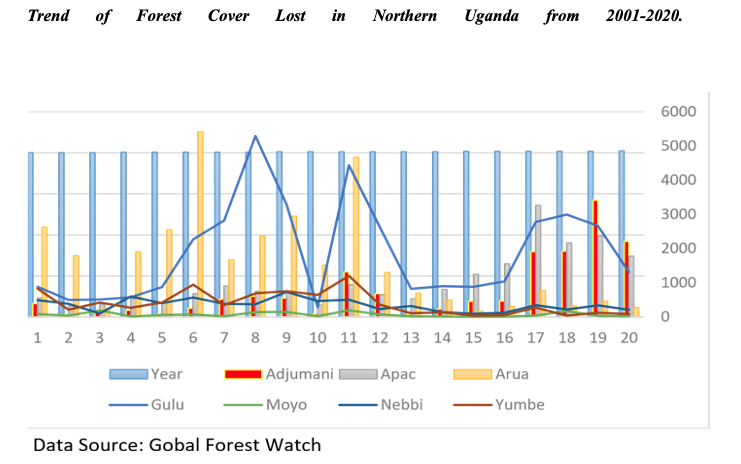
Most of the remaining forests in Uganda are in protected areas or national reserves. Over the entire period of 25 years from 1990 to 2015, Uganda lost 63% of its forest cover at an annual rate of 2.51. Currently, 55% Uganda’s forests grow on protected land and 45% private land in contrast to the situation in 1990 where 70% grew on private land and 30% in protected areas.
In 2010, Adjumani had 159kha of tree cover but by 2021, it had already lost 838 hectares of 1,259 hectares of tree cover, according to Global Forest Watch. Encroachment, logging, urbanization, and establishment of illegal trading centers inside the forest reserves and sugar cane plantation threaten Zoka’s biodiversity.
Since the inception of the National Forest and the Tree planting Act of 2003, every citizen in Uganda must at least plant two trees before cutting one. This act has never conserved forests like Zoka.
It is not the fault of the local citizens says Apema Charles. A farmer who lives in Itirikwa Sub County, Adjumani District. He says that most of the loggers come all the way from Kampala and other regions. He is calling on the National Forest Authority (NFA) and other actors to fence the forest or hand its management to traditional chiefs like during the colonial period.
“If this forest can’t be fenced, its management should be given to us but for now we have less control over the forest because we don’t have powers. Previously, our grandpa used to protect or guard this forest through the use of rituals and other traditional practices and there was nothing like this alarming rate of deforestation today”, says Charles.

